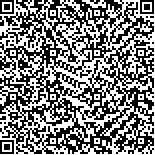本文已被:浏览 525次 下载 594次
投稿时间:2020-10-05 网络发布日期:2021-06-20
投稿时间:2020-10-05 网络发布日期:2021-06-20
中文摘要: 目的 比较三种常用促排卵方案每取卵周期累积分娩率差异,以期指导临床应用。方法 回顾性分析2017年7月至2018年5月山西医科大学第一医院就诊行体外授精-胚胎移植(IVF-ET)的卵巢正常反应不孕症患者的临床资料,其中使用黄体中期促性腺激素释放激素(GnRH)激动剂长方案(A组)、卵泡早期GnRH激动剂长方案(B组)和GnRH拮抗剂方案(C组)促排卵者共1 589例,排除未完成完整周期者27例(包括新鲜周期和解冻周期),入选符合纳入标准者1 562例,其中A组514例,B组531例,C组517例。研究结局为:无可移植胚胎或获得首次活产,随访时间为2年。比较三组的多项临床结局指标及累积分娩率。每组根据年龄划分为:20~30岁、31~35岁、36~40岁和>40岁四个亚组。对同组不同年龄段间、同年龄段不同组间的累积分娩率、流产率及双胎率进行比较。检验水准取α=0.05,采用R×C表χ2检验分割法时,校正为α'=0.017。结果 三组方案下基础激素水平、获卵数、卵成熟率、受精率、流产率、双胎率及累积分娩率等差异无统计学意义(P>0.05);B组优质胚胎率分别明显高于A、C组、种植率明显高于A组(P<0.017);A、B组促性腺激素(Gn)用量、人绒毛膜促性腺激素注射日(HCG日)的雌二醇(E2)及孕酮(P)水平均高于C组,HCG日的LH水平低于C组(P<0.05)。同组不同年龄段患者间比较,随着年龄递增,累积分娩率不同程度下降(P<0.01),流产率不同程度增高(P<0.01);同年龄段不同组患者间比较,36~40岁年龄段患者累积分娩率C组(71.31%)分别高于A组(53.23%)、B组(53.54%)(P<0.017),其余年龄段累积分娩率和所有年龄段双胎率、流产率三组间差异无统计学意义(P>0.05)。结论 对于36~40岁的不孕症患者,选择GnRH拮抗剂方案较黄体中期GnRH激动剂长方案和卵泡早期GnRH激动剂长方案有获得更好临床结局的可能,其余年龄段内区别并不明显,可行三种方案下的个体化选择。
Abstract:Objective To compare the difference of cumulative delivery rate of three commonly used ovulation induction programs per oocyte retrieval cycle,in order to guide clinical application.Methods The clinical data of 1 562 infertile patients with normal ovarian response who received in vitro fertilization embryo transfer (IVF-ET) from July 2017 to May 2018 were retrospectively analyzed.Among them,514 cases were treated with mid-luteal-phase long GnRH agonist protocol (group A),531 cases were treated with early-follicular-phase long GnRH agonist protocol (group B) and 531 cases were treated with GnRH antagonist protocol(group C).The outcome of the study was no transplantable embryo or first live birth.The follow-up period was 2 years.The clinical outcomes and cumulative delivery rate of the three groups were compared.Each group was divided into four subgroups according to age:20-30 years old,31-35 years old,36-40 years old,and over 40 years old.The cumulative delivery rate,miscarriage rate and twin rate of the same group in different age subgroups and the same age subgroup in different groups were compared.Results There was no significant difference in basal hormone level,oocyte number,oocyte maturation rate,fertilization rate,abortion rate,twin rate and cumulative delivery rate among the three groups (P>0.05).The high-quality embryo rate of group B was significantly higher than that of group A and C,and the implantation rate was significantly higher than that of group A (P<0.017).The dosage of gonadotropin(Gn),and the level of estradiol(E2) and progesterone on human chorionic gonadotropin injection day(HCG day) in group A and B were higher than those in group C,and the level of luteinizing hormone (LH) on HCG day was lower than that in group C (P<0.05).Compared with the patients of different ages in the same group,with the increase of age,the cumulative delivery rate decreased (P<0.01),and the abortion rate increased (P<0.01).Compared with the patients of different groups in the same age group,the cumulative delivery rate of group C (71.31%) in 36-40 years old group was higher than that of group A (53.23%),group B (53.54%) (P<0.017).There was no significant difference in cumulative delivery rate,twin rate and abortion rate among other age groups (P>0.05). Conclusion For infertile patients aged from 36 to 40 years old,it is possible to obtain better clinical outcomes by choosing GnRH antagonist scheme than mid-luteal-phase long GnRH agonist scheme and early-follicular-phase long GnRH agonist scheme,but there is no obvious difference in other age groups,so individualized selection under the three schemes is feasible.
keywords: Sterility Cumulative delivery rate Single oocyte retrieval cycle Normal ovarian response GnRH antagonist protocol Mid-luteal-phase long GnRH agonist protocol Early-follicular-phase long GnRH agonist protocol
文章编号: 中图分类号: 文献标志码:A
基金项目:山西省科学技术厅研发项目(201603D321071)
| Author Name | Affiliation |
| FENG Ying,TU Zeng-rong | Fisrt Clinical Medical College,Shanxi Medical University,Taiyuan,Shanxi 030000,China |
引用文本:
冯英,土增荣.三种促排卵方案单次取卵周期累积分娩率的差异比较[J].中国临床研究,2021,34(6):735-740.
冯英,土增荣.三种促排卵方案单次取卵周期累积分娩率的差异比较[J].中国临床研究,2021,34(6):735-740.
